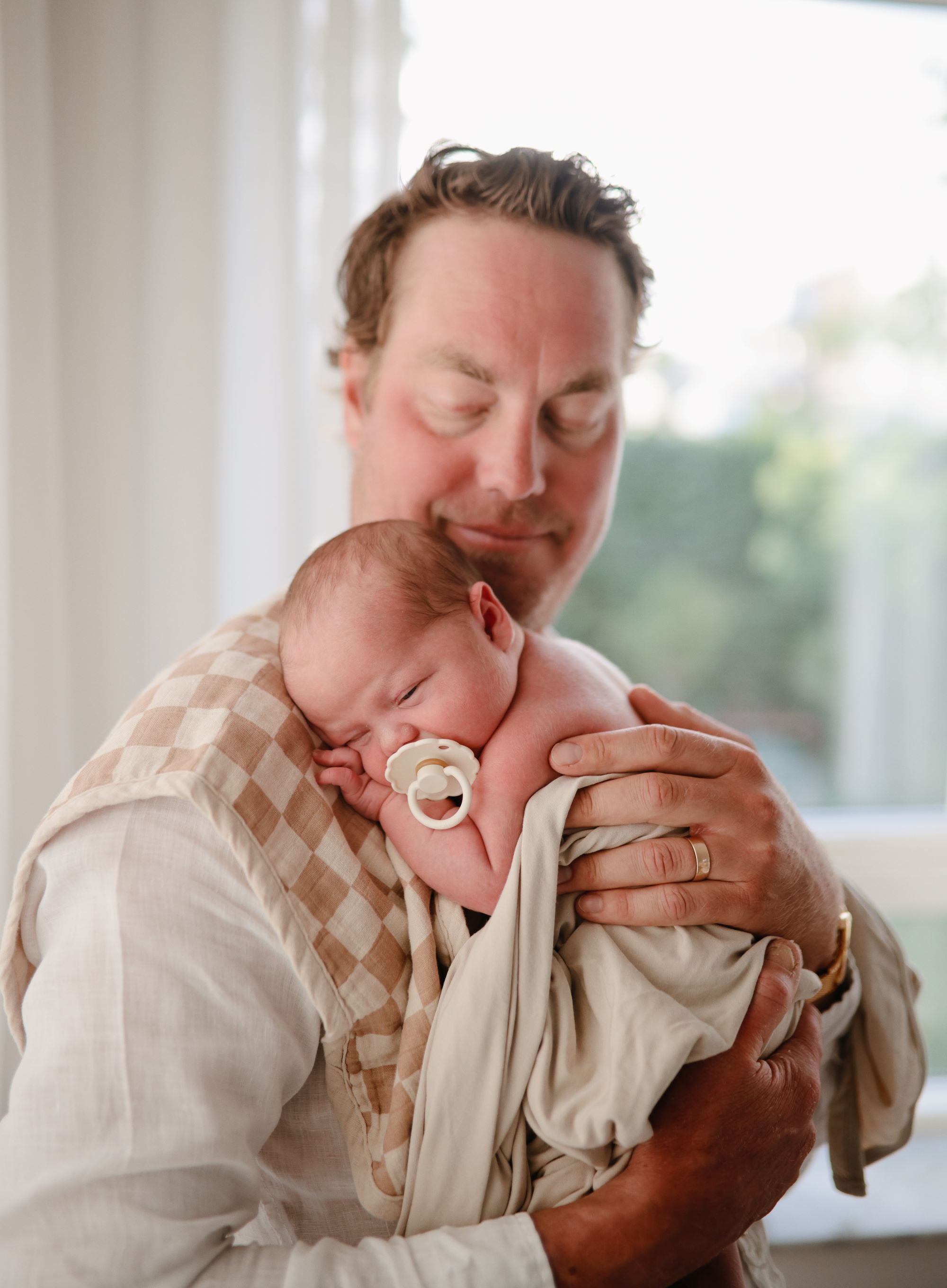- When Should I Stop Swaddling?
- My Baby Often Comes Out of Swaddle. Is This a Sign to Stop Swaddling?
- Should I Stop Swaddling When Baby Starts Rolling Over to His Side?
- How to Switch from Swaddling?
- Want to See How to Switch from Swaddling in Person?
- Baby Over 5 Months and Still Having Difficulty?
You may have heard that newborns miss the feeling of being in the womb for the first few months after birth. They like to feel safe while sleeping, and that’s what swaddling offers. However, babies can’t be swaddled forever. Let’s talk about when to stop swaddling and how to transition from swaddling.
When Should I Stop Swaddling?
The right time to stop swaddling is when your baby starts showing signs of rolling over, especially if they start rolling from their back to their stomach. This usually happens between 3 and 4 months of age. Once babies can roll over, swaddling can become dangerous because they may not be able to roll back over, increasing the risk of sleep accidents.
According to the American Academy of Pediatrics (AAP) (1), babies typically start rolling over around 3-4 months of age. If your baby is in this age range but has not shown any signs of rolling over, there is no reason to stop swaddling just yet. However, once babies can roll over onto their stomachs or sleep on their stomachs, swaddling them is no longer safe because they need their hands free to push themselves off the mattress.
My Baby Often Comes Out of Swaddle. Is This a Sign to Stop Swaddling?
It depends! Babies can come out of their swaddles for a variety of reasons.If your baby is coming out of the swaddle and showing signs of rolling over, it's time to stop swaddling.
However, there are other situations where babies break out of their swaddles that have nothing to do with rolling over. Let’s discuss those reasons and how to keep your baby swaddled safely:
- Active Sleep - You may notice your baby coming out of the swaddle during very active sleep (which is a normal part of newborn sleep!). Make sure the swaddle you use meets swaddling safety guidelines .
- Overtiredness - Your baby may also try to get out of the swaddle or fight the swaddle when they are overtired. You can avoid overtiredness by paying attention to signs of sleepiness and the duration of your baby's wakefulness.
- Growth - Remember, as babies get older, they grow bigger and stronger. This can make it easier for them to get out of their swaddle. Make sure your baby is wearing the right size swaddle for their height and weight and swaddle them tightly but securely.
- Swaddle Type - We highly recommend swaddles that use velcro or zippers for easy, secure swaddling. Every baby has different swaddle preferences, so you may need to find the best fit for your baby. If your baby is still struggling to get out of swaddles with velcro or zippers, consider the Mushie Baby Muslin Cloth which has a design that keeps baby’s hands down, making it harder to get out of the swaddle and helps prevent the blanket from coming loose.
Should I Stop Swaddling When Baby Rolls Over to Side?
It depends on your baby's age and development.- For newborns in the early weeks : Usually, when a newborn is seen rolling onto their side, it’s due to an involuntary muscle flexion called the newborn curl. This isn’t a sign of actual rolling, so you don’t need to stop swaddling just because you see a newborn curl. In fact, when done correctly, swaddling actually helps babies sleep safely on their backs . (Of course, check with your pediatrician if you have any concerns.)
- For older babies: If your baby can lift up to their shoulders (usually between 3-4 months according to the AAP(1)), this is a sign of true rolling over, not just an involuntary newborn curl. When we see signs of rolling over, it's time to stop swaddling.
If you have any questions, please talk to your child's doctor.
How to Switch from Swaddling?
Here are four options to help you transition from swaddling:
- Cold Turkey
- Swaddle with One Arm Out
- Partial Night (Certain)
- Use Transition Items
































































































